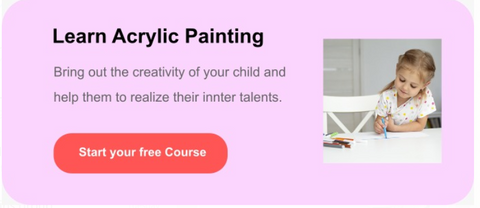How Art helps in Creative Thinking

When you're able to think creatively it can open you up to finding new solutions you otherwise wouldn't have thought of. A lot is happening both in the mind and the body when we make art, and it can be used for therapeutic means, both in rehabilitation medicine and on your own.

Creative activities are important for remaining healthy and staying connected to yourself as well as the outer world. When a child is engaged in any type of creative expression including drawing, painting, and sculpture, it allows them to imagine new ways to communicate and engage with the world, as well as engages the brain’s neuroplasticity, also helping special children recover from things like traumatic brain injuries or stroke. Children benefit greatly from art classes as they get a chance to work on their skills and learn concepts of colors, shapes, and composition. They know how to deal with pictorial spaces and come up with their masterpieces. Developing the project in the class includes imitation, step-by-step planning, and visualization which cultivates brain function. Healthy functioning of the brain ensures focused attention and positive thinking. Kids also learn to interpret and analyze images in art sessions which stimulate the creation of new neural pathways and ways of thinking. Artists are often better observers and have better memory, and this may be due to how art affects the brain’s plasticity. Learning about color can help children develop vocabulary, complex thinking, and keen observation. It works as a catalyst and can enhance the emotional behavior of a child. Sculpting materials provide tactile experiences which help to develop new thinking patterns in students. Practical demonstration in art classes allows children to experiment with color, and shades as they learn theories and elements of color compositions. Exploring color using accurate vocabulary and connections to real things will help them internalize a deeper understanding of a concept that many adults understand only at a cursory level. As your child thinks deeply about color and observes it intentionally through a variety of experiences, he/she gains new perspectives on his/her rapidly expanding world. Exposure to visual art and the ability to read images enables students to express representative and abstract thinking.

Creative expression in the arts is as natural and developmentally necessary for children as fresh air and sunshine. Through the arts, children learn the fundamental process of discovering and imagining, originating and problem-solving, thinking and creating. And our instructors guide them thoroughly to sharpen their skills of drawing as well as imaginative thinking. The conversations children have during the sessions help your child develop thinking skills that will last his/her lifetime.
Join our live online art classes to learn skills, techniques, and concepts of fine art and let your child explore his/her world today!
